Flamingo fish: description, care, breeding and compatibility
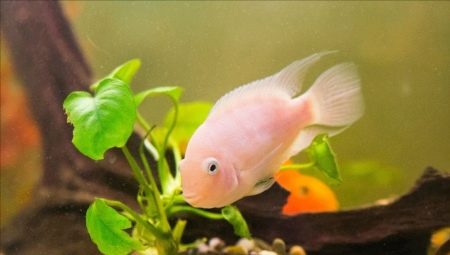
It often happens that life without a pet is boring and dreary, however, there is simply no opportunity to have a cat or dog. In this case, aquarium fish will be an excellent option - small pets, the care of which is extremely simple. The flamingo cichlazoma with its unusual habits and predatory disposition can be considered a real find for aquarists.
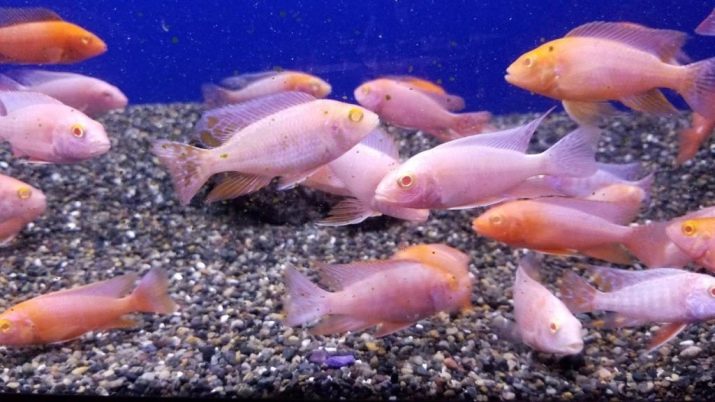
Description
The flamingo cichlazoma is a pale pink or deep pink fish. It is not hard to guess that the name of the fish is directly related to its pink color. The size of a cichlazoma, as a rule, does not exceed 15 centimeters. Scientists still argue about the true origin of this fish. There are two main theories of the appearance of this species:
- from the selection form of an albino black-striped cichlazoma;
- as a result of natural mutation.
Most scientists refute the first version, since the flamingo cichlazoma and the albino black-striped cichlazoma are noticeably different from each other. The albino fish is almost snow-white in color and has red eyes. In addition, the black-striped cichlazoma is several times larger than the flamingo. The second version is more plausible than the first, because mutation during the evolutionary process is not uncommon.

Maintenance and care
These fish are considered extremely unpretentious when compared with other brethren. An aquarium of 50 liters or more with warm water (25-30 degrees) is perfect for flamingos. Its hardness should be medium (6.5-8 pH). It is very important to ensure a weekly change of 1/3 of the liquid. For the bottom of the aquarium, it is recommended to purchase fine gravel or pebbles.
Tsichlazoma flamingos are very fond of digging in the ground, so a coating such as sand can instantly make the water cloudy. Compact shelters and aquarium decorations will be useful, because fish spend most of their time in secluded places. It is better to choose fast-growing species with strong roots as plants. It is important that they are placed in pots. Great options would be:
- cryptocoryne;
- hygrophilia;
- vallisneria.

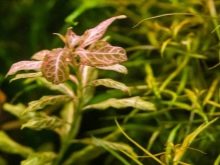

As for the lighting, it should not be too bright, or, conversely, too dim.
Optimal lighting is beneficial for fish breeding and overall health. You can feed the flamingo cichlazoma with almost anything - the fish is omnivorous. However, most of her diet should be plant foods. The following products are perfect:
- cereals;
- seaweed;
- cabbage;
- carrot.
As live food, the following are perfect:
- earthworms;
- tubifex;
- butterfly;
- shrimps.
Vitamin supplements are recommended to improve the health and appearance of fish.

Compatibility with other fish
Despite the fact that flamingos are peaceful fish compared to other cichlids, they will have problems with other fish. They will eat smaller ones (for example, guppies or tetras), and they will have clashes with equal ones (cockerel, goldfish). Nevertheless, there are a lot of fish that can live peacefully with flamingos:
- representatives of the cichlid species;
- akars;
- apistograms;
- plecostumus.
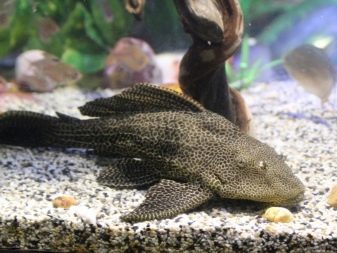
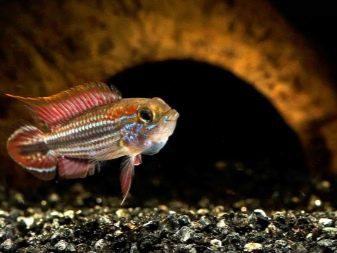
Reproduction
Puberty in this species occurs at about 10-11 months after birth. Reproduction itself takes place from May to September. For stimulation, you can change the water and raise the water temperature by a couple of degrees. For successful breeding, it is necessary to select the brightest and healthiest individuals.
Distinguishing a female from a male is quite easy - the females are much smaller in size and brighter in color. They also have vague spots on their sides, and the frontal part is less pronounced than in males. It will not be superfluous to plant the selected pair in a separate aquarium.
The start of spawning can be determined by increased color and more aggressive behavior. Disagreements between fish are becoming more frequent, but the behavior of males in relation to females is noticeably improving. Further, future parents choose a place where the female will lay her eggs. No one is allowed to enter the selected territory, and the offspring are monitored very carefully.

Literally 3-4 days later, the first fry emerge from the eggs, independent from birth. Particular attention should be paid to their nutrition. The fry can be fed with the following foods:
- ciliates;
- microworms;
- liquid special feed;
- boiled and thoroughly ground yolk.
Fry grows quite quickly. Literally after 3-4 weeks, they can be safely transferred to food for adults.
Often, parents perceive their own fry for food. To prevent this from happening, young individuals must be transferred from adults to another aquarium with a volume of at least 30 liters.
Due to the fact that the origin of the fish is still unknown, it should never be crossed with other species. Such manipulations can lead to extremely negative consequences.
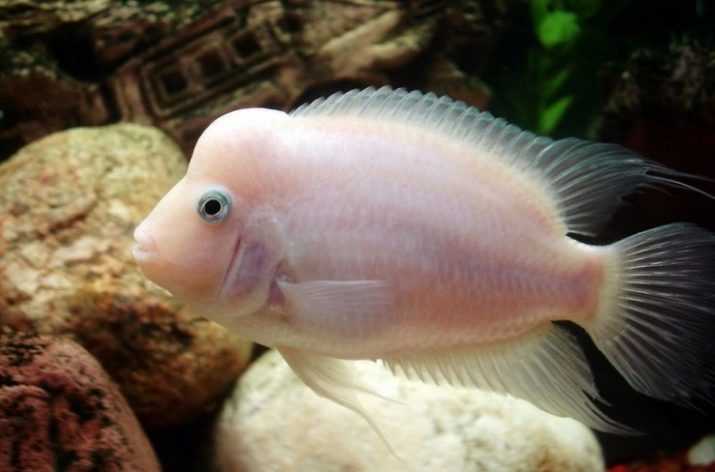
Diseases
Just like other fish, flamingos are susceptible to diseases such as:
- argulez;
- asphyxia;
- anoxia;
- obesity;
- gonadal cyst;
- common cold.
In addition to the main common for all types of diseases, flamingos are prone to hexamitosis. This disease is often called a hole disease, it is directly related to the quality of the liquid and feed. The disease can be determined by characteristic external lesions. Treatment should be carried out with metronidazole and other prescribed drugs.
In general, caring for flamingo cichlazoma is extremely simple and even exciting. However, even here one cannot do without possible difficulties - diseases or clashes between fish and neighbors in the aquarium. It is important to prevent all possible problems, and then the fish will be able to decorate the aquarium for a very long time.
All about the flamingo fish, see the next video.








